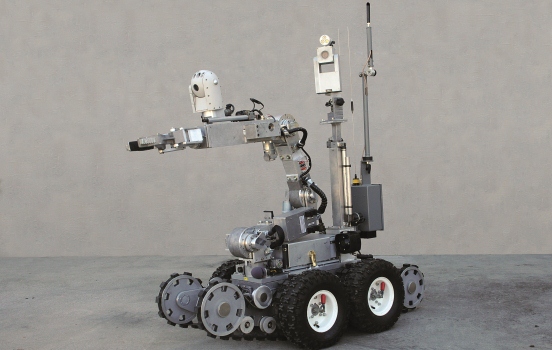
Explosives Used on US Police Robot to Kill

The use of a remotely-controlled bomb disposal robot in Dallas, Texas on July 7 to deliver an explosive that detonated, killing a man suspected of shooting more than a dozen people, has attracted media attention and public scrutiny across the United States and around the world.
While several media headlines have called this a “killer robot,” it is not the type of autonomous weapon that our global coalition of non-governmental organizations have been campaigning against since 2013. Nevertheless, the use of a robot in policing with lethal intent may raise ethical and other concerns.
Complete information on the incident is not available, but according to the Dallas Police Department, it sent an Andros Mark V-A1 robot, more commonly used for explosive ordnance disposal (EOD) tasks, into a building that the suspect, Micah Xavier Johnson, had retreated to. Police said they tried to negotiate with Johnson, who allegedly killed five police officers. Johnson reportedly refused to surrender and exchanged fire with police. According to the police, he died “as a result of detonating the bomb.”
Dallas police appear to have concluded the suspect posed an imminent threat to others and decided the use of lethal force was reasonable under the circumstances. Dallas police chief David O. Brown told a press briefing, “we saw no other option but to use our bomb robot and place a device on its extension for it to detonate where the suspect was.” According to Brown, “other options would have exposed our officers to great danger.”
The Campaign to Stop Killer Robots is not aware of another US law enforcement use of a remotely-controlled ground vehicle or drone to deliver an explosive to kill a suspect. The incident also represents a rare instance of police use of explosives with the intent to kill.
The initiator used to detonate the one-pound payload of C-4 explosives has not been specified, but likely involved the use of a remotely activated electrical detonator. Nonetheless, we seek confirmation that the explosive device was under the command and control of a human operator and not detonated by the victim.
Was this a lethal robot? Yes, in the sense that it was a robot carrying a lethal device. But it appears that its operation and the detonation of the explosive were under human control. So it was not a lethal fully autonomous robot or weapon system as “killer robots” are known.
The Campaign to Stop Killer Robots calls for a preemptive ban on fully autonomous weapons systems. These are future weapons systems that would lack meaningful human control over the critical functions of selecting and attacking targets. The campaign does not seek to prohibit armed drones or remote-controlled vehicles and the use of the term “killer robot” is inappropriate for this incident.
We will continue to monitor developments closely. For more information, please see these articles by some individual members of our Campaign to Stop Killer Robots:
- Noel Sharkey in The Guardian
- Heather Roff in The Duck of Minerva
- Camilo Serna in Univision


